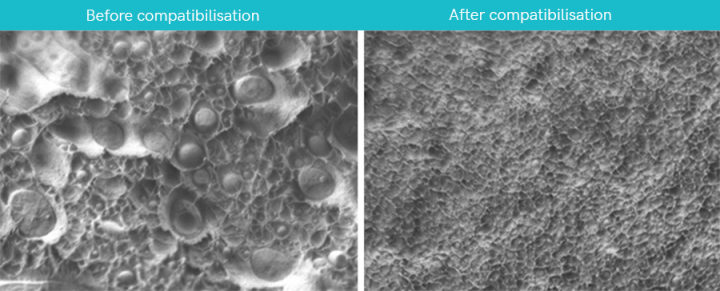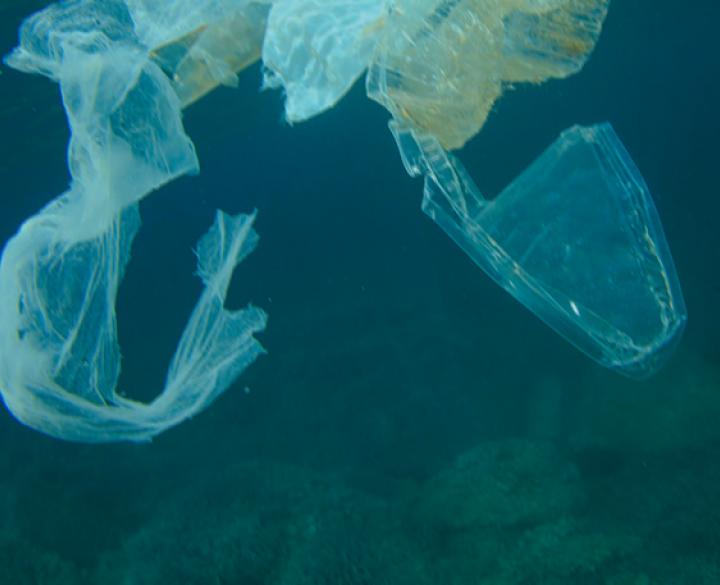Multi-layer plastic films
Thanks to the combination of ultra-thin packaging layers and high barrier properties multilayer packaging are cost-effective solutions to extend food shelf life and to reduce waste. However, these multilayer packages are difficult to sort and recycle, so many of them are simply downcycled (into products of lesser value) or incinerated with energy recovery.
Plastic waste, a burden that can be turned into a great opportunity
Plastic pollution threatens to take over the entire planet. However, our comfort and welfare of today depend on this very material. Plastics prolong the freshness of food, lower our transportation costs and even contribute to the production of green energy (windmills), and these are only a few examples of why we should be grateful to the invention of plastics.
In spite of all these positive qualities, what has gone wrong and why do plastics now threaten our society, and more importantly, how can we ever solve the problem?
Awareness-raising and recycling
Awareness-raising involves providing information to consumers. Plastic litter damages our planet. Therefore, all plastic disposables should be treated with due care and aftercare. Responsible consumers are the first key to a clean planet.
Also producers have be more aware of the impact of their policy on the environment. In a society where marketing and product diversity are primordial, it is not obvious to promote the use of recycled materials and the concept of "design for recycling". Especially when consumers continue to associate "recycled matter" with negative concepts as "inferior", "waste", "less resistant"...
Furthermore, recycling needs to be optimized, in all its aspects. However successful the awareness-raising of consumers and producers may be, the recycling technologies must be ready to follow suit.
Many Belgian recycling companies are already on the right track. Recycling starts of course with a well-functioning waste collection system. The well-known system of PMD collection bags inviting the consumer to select his/her packaging waste will soon be extended. The selective collection on the recycling parks may also be subject to optimisation.
Collecting and sorting waste
The collection is followed by the sorting phase. Together with recycling companies, Centexbel-VKC investigates the best separation methods and sequences by trying to provide an answer to the following questions:
- degree of purity of the waste flow before it can be used
- which degree of purity is economically viable
- techniques to process a certain flow of recycled matter
- markets
To answer these questions it is important to characterise the start flows. In this context, Centexbel-VKC assists companies by determining the flow properties of material flows, by carrying out test runs on the extrusion or injection moulding pilot lines to evaluate the processability and the composition of the materials. The evaluation is performed by means of TGA (determination of the inorganic fraction) or by means of an IR scanning method. The scanning method can also be used to evaluate the efficiency of a separation technique or sequence.
Compatibilisation

Plastic waste flows also include multi-layered plastic waste flows that are hard or even impossible to separate with the existing techniques. Multi-layered plastics are commonly used in food packaging. Because incineration is against the very principle of a circular economy, Centexbel-VKC and partners, examine the possibility to recycle these products.
Projects as plast-i-com and refoil already demonstrated that the use of compatibilizers can improve the miscibility of non-compatible plastic flows.
We have been able to show that a good compatibilizer homogenizes the morphology of a blend (see picture above). As a consequence, the impact resistance is significantly improved. As a general trend we also observed that it improves the elongation of a material and decreases its rigidity. Depending on the final application, these effects can be evaluated as negative or positive.
Conclusion
There is still a long way to go. However, people are becoming increasingly aware of the plastic waste and the necessary steps to clean the planet are being taken on all levels.
And let's not forget, the mountains of descarded waste and rubbish contain masses of "pure gold"




